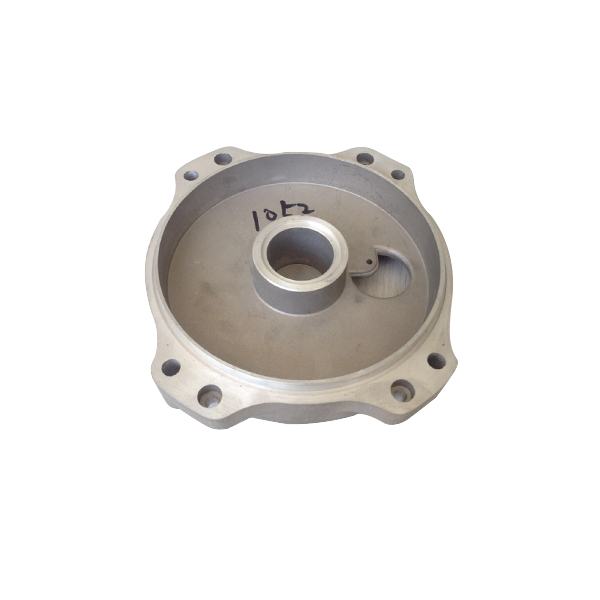Mobile:+86-311-808-126-83
Email:info@ydcastings.com
Exploring the Benefits and Applications of Die Casting Products in Modern Manufacturing
Die Casting Products A Comprehensive Overview
Die casting is a highly efficient manufacturing process used to produce complex metal parts with excellent dimensional accuracy and surface finish. This technique involves forcing molten metal into a mold cavity at high pressure, which allows for rapid production of large quantities of precise components. The die casting process generally utilizes non-ferrous metals, such as aluminum, zinc, magnesium, and copper, making it an ideal choice for a wide range of industries, including automotive, aerospace, electronics, and consumer goods.
The Die Casting Process
The die casting process can be divided into several key stages mold preparation, metal melting, injection, cooling, and ejection. Initially, the dies, which are made of high-quality steel, are prepared and pre-heated to optimize the metal filling process. Once the die is ready, metal is melted in a furnace. This molten metal is then injected into the pre-heated die under high pressure.
The injection stage is crucial, as it ensures that the molten metal completely fills every detail of the mold cavity. After filling, the metal cools and solidifies within the die. Once the casting has cooled adequately, the die opens, and the finished parts are ejected. This entire process can be performed rapidly, allowing for high production rates and efficiency.
Types of Die Casting
There are two primary types of die casting processes hot chamber and cold chamber.
1. Hot Chamber Die Casting In this method, the molten metal is maintained in a chamber that is heated. It is suitable for metals with low melting points, such as zinc and lead. The hot chamber process allows for quicker production due to its continuous feed of molten metal, making it ideal for high-volume production.
2. Cold Chamber Die Casting In contrast, the cold chamber process involves the melting of metal in a separate furnace, and then the molten metal is poured into the die chamber. This method is typically used for metals with higher melting points, such as aluminum and magnesium. Cold chamber die casting can accommodate a broader range of alloys and is often used when intricate designs or larger components are required.
Advantages of Die Casting
die casting products

Die casting offers numerous benefits that make it an attractive option for manufacturers
- High Accuracy and Complex Shapes The precision of die casting allows for intricate designs and tight tolerances, making it suitable for complex geometries that would be difficult or impossible to achieve with other methods.
- Surface Finish The process produces components with a smooth surface finish, reducing the need for additional machining or finishing processes.
- Material Utilization Die casting minimizes waste, as the process can produce near-net shapes, significantly reducing material costs.
- Rapid Production The ability to produce large volumes of components in a short amount of time is one of die casting's most appealing advantages, particularly for mass production.
- Strength and Durability Die-cast products are known for their excellent mechanical properties, making them suitable for demanding applications.
Applications of Die Casting Products
Die casting products have a wide array of applications across various industries. In the automotive sector, components such as engine blocks, transmission housings, and wheels are commonly manufactured using die casting. The aerospace industry benefits from die casting with lightweight yet strong parts used in aircraft structures and engine components. Furthermore, consumer electronics rely on die-cast enclosures for devices such as smartphones and laptops, providing both aesthetics and durability.
Conclusion
In summary, die casting is a vital manufacturing process that contributes significantly to modern industry. Its ability to produce intricate, high-quality components rapidly makes it indispensable, especially in fields requiring precision and efficiency. As technology advances, the die casting industry continues to evolve, introducing new methods and materials to meet the ever-growing demands of various sectors. The future of die casting is promising, with increased innovation paving the way for even greater capabilities in product design and manufacturing excellence.
-
Why Should You Invest in Superior Pump Castings for Your Equipment?NewsJun.09,2025
-
Unlock Performance Potential with Stainless Impellers and Aluminum End CapsNewsJun.09,2025
-
Revolutionize Your Machinery with Superior Cast Iron and Aluminum ComponentsNewsJun.09,2025
-
Revolutionize Fluid Dynamics with Premium Pump ComponentsNewsJun.09,2025
-
Optimizing Industrial Systems with Essential Valve ComponentsNewsJun.09,2025
-
Elevate Grid Efficiency with High-Precision Power CastingsNewsJun.09,2025











